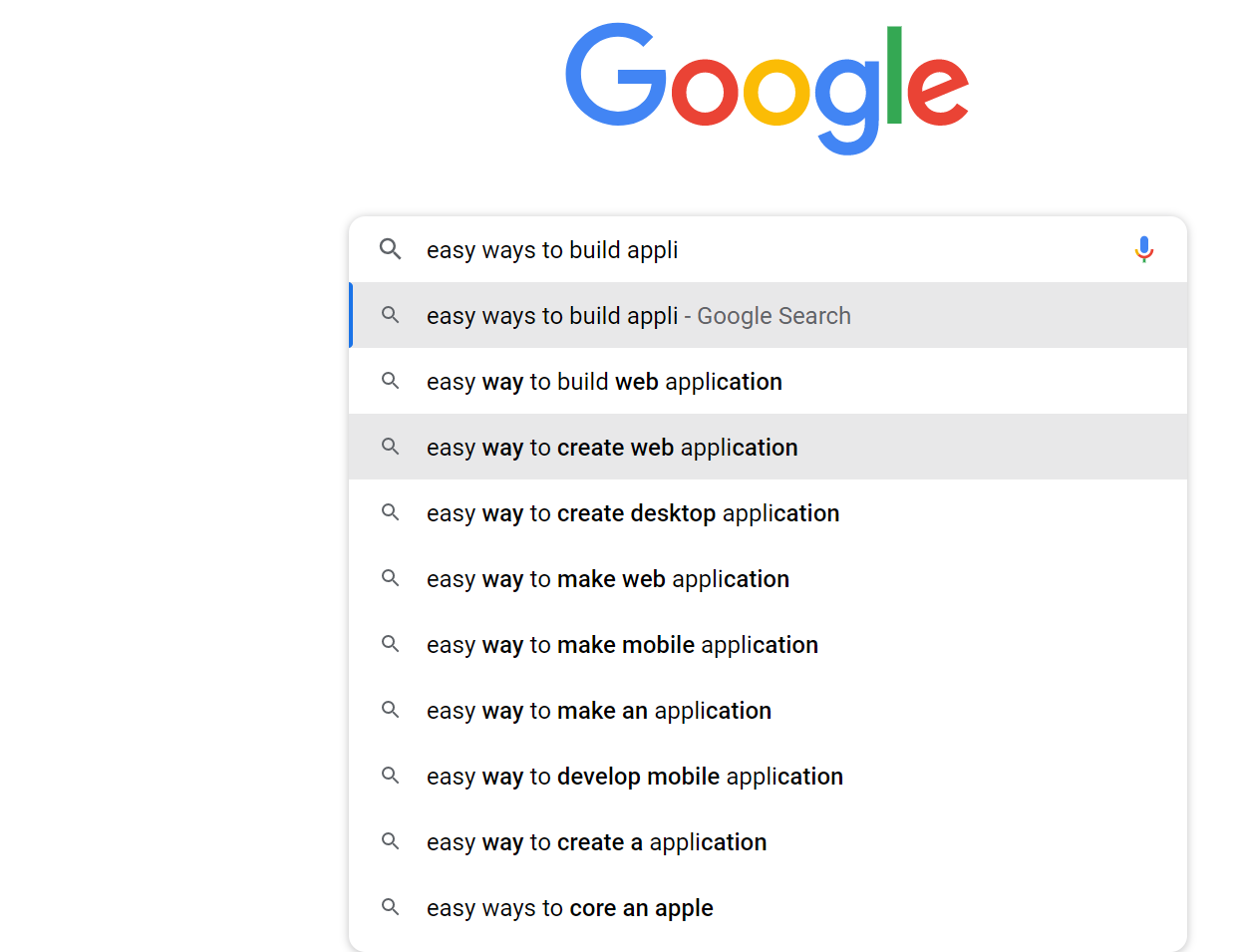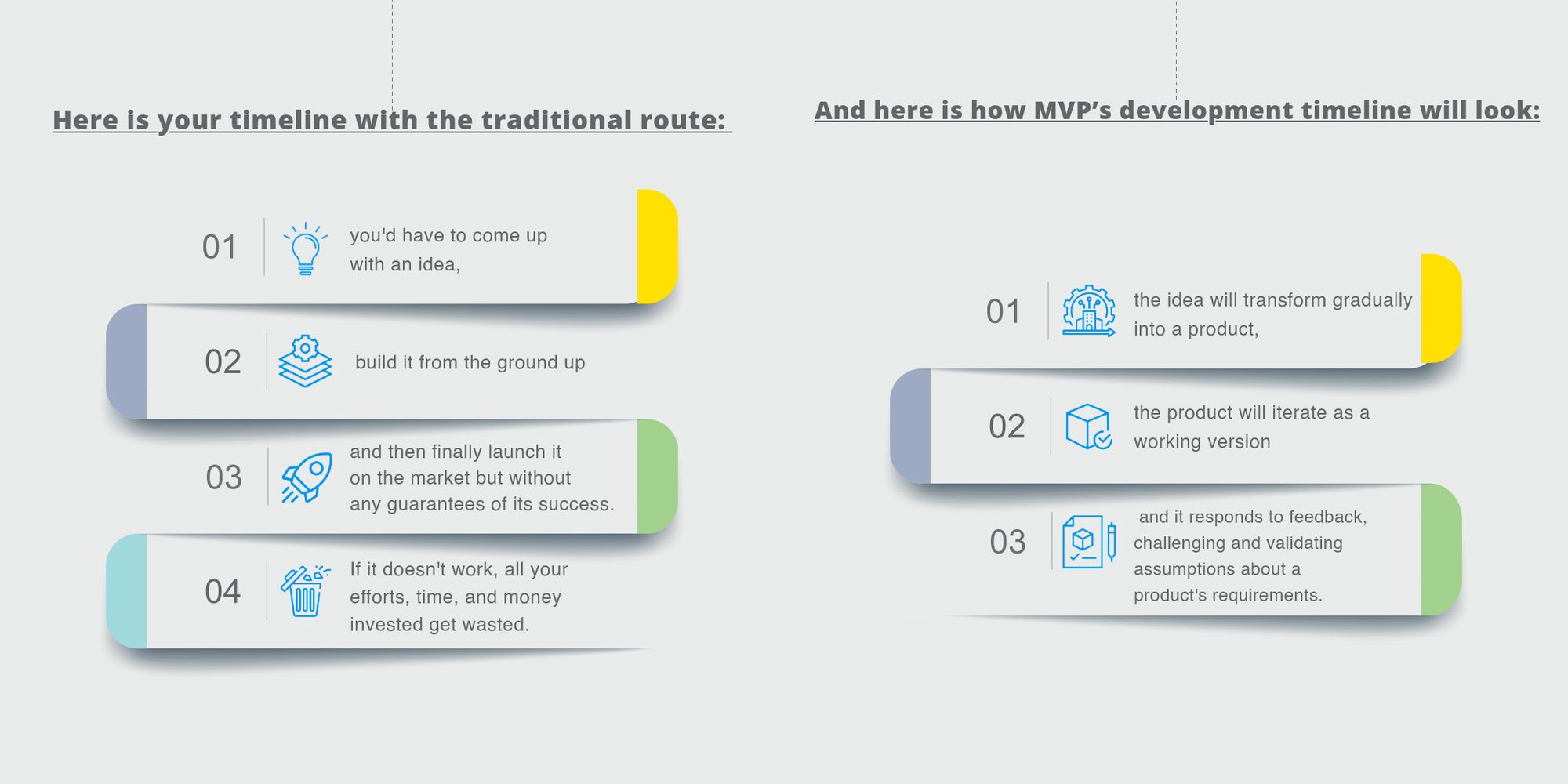Do you remember what you searched online when you wanted to develop an application?
Was it about how you can build your product quickly? Or how to get to the first product version in the shortest time? Or was it how your competitor became so big so soon?

You must have got what you needed, but was there any search result which must have told you,
“Go for Prototype of an app.”
And by any chance, did you get the phrase,
“Build Minimum Viable Product”
If you did, you are a search pro. If not, well, then you have reached the right page.
Let us start with the definition of MVP
Imagine a messy kid's room, with toys, clothes, & other stuff lying around on the floor. The concern is to teach the kid how to keep things organized. But the room lacks basic organization – some simple storage boxes, which are easy to access and just enough to help kids learn the act of arrangement.
There is a problem (Messy room); a solution (storage box). Now the task is to identify what type of boxes, how many of them, are boxes the only option, and will kids be able to use them.
What is the point here?
There is an idea that would solve the problem, but it should be put in a best-simplified manner so as not to overwhelm the users. A Minimum Viable Product (MVP) is the offering, striking right at this point.
A minimum viable product is the most basic version for the idea of a product- a product that has just enough features that can be used and adopted by early customers. In turn, these customers then provide valuable feedback to the company for future product enhancements.

Theoretically, it may sound close to what a product prototype can do, but technically, MVP is a more live version of a prototype.
The MVP approach is sure to impress those keen on functional models and are reluctant to accept the product that is just available on the paper or in the presentation or is crafted out of cardboard.
How MVP fits in the real-world
You get the gist of what we are trying to achieve with an MVP or a functional prototype of an app. But what exactly can you build under the MVP umbrella?
Let us take an example.
You have this brilliant idea for launching a website that helps young children in the rag-picking industry get their fair share of rights and a chance at a decent life. But you do not know if it will work out. Mainly because, not everyone has the same set of beliefs, and also, it must be challenging to reach the right beneficiary.
Now, let us put this in the mindset of the MVP approach. You can test the waters by:
- building an MVP with a landing page only to check its viability instead of building a complete website.
- If the visitor is interested in the cause, they can sign up for regular updates about the same.
- With the number of signups coming in and the feedback from the users, you will get a fair idea about the viability of your product.
The above example is a perfect scenario for low-fidelity MVPs. And there is a vast development scope as we move to high-fidelity MVPs.
This brings us to another important topic: low-fidelity versus high-fidelity MVPs.
How to decide between low-fidelity versus high-fidelity MVP
Before we get into the specifics of the two categories, here is what you need to list the following for us. No, wait! The list is for yourself.
- The biggest potential risk of the idea & ways to avoid it.
- The time you can afford to build and wait for the results.
- The money you can afford to spend here, as this is just a learning phase for the business.
Once the list is up, you are ready to go on a discussion with your MVP developer partner. This will make you sound well-prepared.
| Build low-fidelity MVPs when | Build high-fidelity MVPs when |
|---|---|
| You need to understand customers’ problems. | You need to know your customers’ willingness to pay for the product. |
| You want to check the value of the solution for customers. | You are seeking early adopters who can spread the word about your product. |
| You need to analyze if the problem is worth solving. | You are sure about the problem's existence and want to proceed with the best potential growth strategies. |
| You are in exploration mode to find out the most effective solution. | You think this is the best you can offer and can go ahead with your value proposition, call to action, and communication channels. | Types Included | Types Included |
| Customer interviews, blogs, forums, landing pages, split testing, explainer video, paper prototypes, Ad campaigns, “coming soon” campaigns, micro-surveys | Digital prototypes, 3D models, “the wizard of oz” MVP (Front side pretending to be real product), “Concierge” MVP, “Piecemeal” MVP, crowdfunding (getting pre-orders, single featured MVP |
There are occasions when an ideator would want something from both types. We suggest starting with the low-fidelity type only and gradually jump to options from high-fidelity. This switch will help in resource and cost optimization during MVP development.
Still wondering if MVP is a right choice
If you wonder why I would go for an MVP instead of the traditional application development route, then this might change your mind.
A Swedish music-streaming service, Spotify started with a simple landing page and a single feature to stream music. They tested the market, evolved, and now, they have over 20 million active users and 5 million paying subscribers, and they are continually growing.

Traditional application development versus MVP approach
Check out a creatively designed description on What’s an MVP., for 2 minutes read.
Anuyat’s Role in Developing MVP
Anuyat is here to guide you through the process of building your very own MVP.
Anuyat began its operations in 2017 as a leading SaaS development company providing SaaS solutions, MVP, AI applications, and eSim solutions.
Contact our experts for a one-to-one consultation over building an MVP for your idea.
Or even better, self-estimate the timeline and cost of your MVP using https://getanmvp.com/project-name platform.
getanmvp.com is an effort from Anuyat.com to help entrepreneurs understand the dynamics of Minimum Viable Product and what it takes to build a product-market fit out of their digital ideas.
Anuyat is a Pune-based company and offers Technical Consultancy, User Experience Engineering, DevOps Solutions, Mobile & Web Applications and of course, MVP.




